Tibetan Monk Hat
- Catherine
- Last Updated : 12/08/2025
Talking about Tibet, it cannot be separated from the topic of religion. Tibet is a large religious area with 1,700 monasteries. It is dominated by Tibetan Buddhism , which is one of the Buddhist sects. When we talk further about Tibetan Buddhism, we will notice that some Tibetan monks wear red hats and some Tibetan monks wear yellow hats. What does this mean? In fact, they symbolize two major sects of Tibetan Buddhism - Nyingma (Red Hat) and Gelug (Yellow Hat). In addition to different sects, the monk hats worn by different positions are also different, the common ones are Lotus Hats, Pandit Hats, Fan-shaped Hats and Small Hats.
Tibetan Monk Hat Main Colors: Red and Yellow
The Gelugpa monks wear yellow hats, the Nyingma monks wear red hats, and the Kagyu monks wear white hats in summer.
Gelug Sect (Yellow Hat)
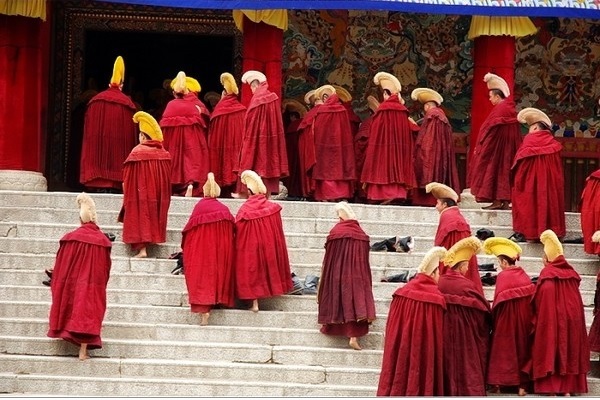
Gelugpa is a sect of Tibetan Buddhism in China. In Tibetan, Gelug means good discipline, and the school emphasizes strict observance of the precepts, hence it's named. The monks of this school wear yellow hats, so they are also known as the Yellow Sect.
The founder Tsongkhapa was originally a Kadam school monk, so the school is also known as the new Kadampa. Tsongkhapa had studied under the major religious sects in Tibet in the 14th century, such as Sakya and Kagyu. He advocated religious reform in response to the abolishment of monks’ discipline and the corruption of monastery life in Tibetan Buddhism. He proposed that monks should strictly obey the precepts, not do farm work, not marry, and strengthened the management of the monastery system.
Regarding the practice, he advocated an equal emphasis on Exoteric Buddhism and Esoteric Buddhism, Exotoric Buddhism first, then Esoteric Buddhism, and emphasized doctrine and Buddhist Logic, etc., which can be helpful to get free from suffering.
It is worth mentioning that the Yellow Sect implements the reincarnation system of living Buddhas. The most famous are the Panchen Lama, Dalai Lama, and Pabala Living Buddha.
Nyingma Sect (Red Hat)
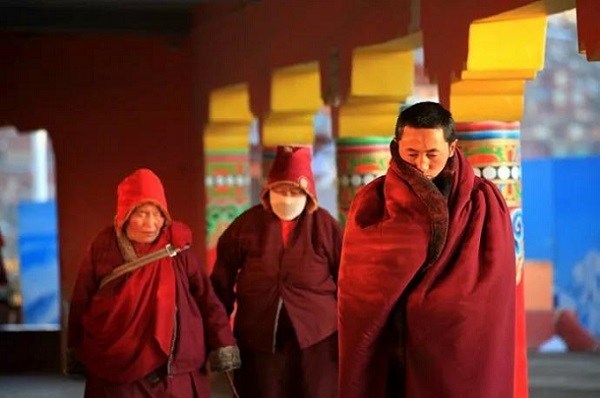
Nyingma Sect is one of the four major lineages of Tibetan Buddhism. Because the monks of this school wear red hats, it is also called the Red Sect.
It is an old sect compared with the other three lineages (White Sect-Kagyu Sect, Flower Sect-Sakya Sect, Yellow Sect-Gelug Sect), and has the longest history. The term Nyingma means "ancient" or "old", so Nyingmapa is an ancient school or an old school. The "ancient" refers to its scriptures that were handed down from the 8th century AD and have a long history; "old" refers to some of its doctrines and rules that are based on the old secret mantras of Tubo.
Nyingma Sect is closely related to the Yongzhong Bon religion inherent in Tibet. From the 8th to 9th centuries AD, Tantric Buddhism was introduced to Tibet from India and passed down from father to son. It happened that the mystery of Tantric Buddhism was very similar to Yongzhong Bon which had already placed a great influence on the Tibetan people. Then, the two gradually merged.
The Red Sect is mainly based on Tantric practice. Its thinking is similar to Chinese Zen Buddhism which emphasizes insight into the nature of mind and nature of things. Today, Red Sect not only spreads in Tibetan areas of China, but also in India, Bhutan, Nepal, Belgium, Greece, France, and the United States.
Tibetan Monk Hat Types
According to the appearance of Tibetan monk hats, they are divided into four categories: Lotus hats, Pandit hats, fan-shaped hats, and small hats. It is believed that this classification method can more intuitively show the shape characteristics of the Buddhist hats.
Lotus Hat
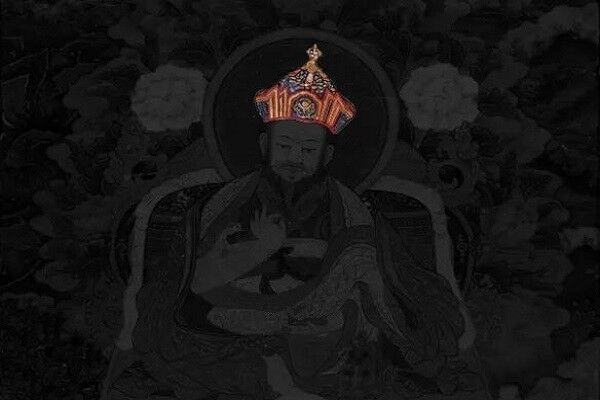
Lotus Hat is mainly made of Tibet wool. The top of the hat is slightly curved, the brim is turned up, and the front is open. It is shaped like a lotus. Only high-ranking lamas of the Nyingma School are allowed to wear this kind of hat. There are many types of lotus hats, large and small, and the amount of decoration on the hat is based on the specific Nyingma tradition.
Among them, the hat worn by the Guru Padmasambhava is called "Pema Hat” and also called Sahor Pandit Hat because it was dedicated to the master Guru Padmasambhava by King Sahor.
The hat has two layers, symbolizing the Development Stage and Completion Stage of Vajrayana. The hat has three points, symbolizing the Buddha's three bodies. The five colors of the hat symbolize the five colors of the fruit. The sun and moon pattern on the hat symbolizes the combination of convenience and wisdom. The blue hat edge symbolizes the eternal vow. The crest symbolizes the impregnability of Buddhist meditation. The eagle feather decoration symbolizes the supreme Dharma.
Pandit Hat
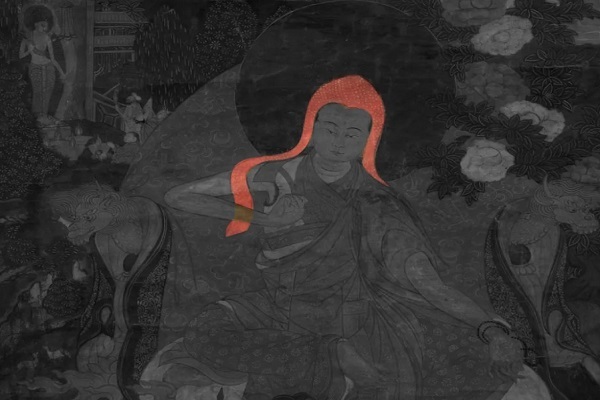
Pandit Hat is the most common type of hat in Tibetan Buddhism, which was first introduced into Tibetan areas by Atisha. It has a rounded, pointed top and a long trailing edge on each side of the hat that covers both ears and shoulders. Pandit Hat has two types - Banyen and Bantong. Tibetan monks who are proficient in Ten kinds of Wisdom wear Banyen hats and monks who are proficient in Pañcavidyā (five classes of knowledge of ancient India)can only wear Bantong hats. The shapes of the two hats are very similar, but the Banyen's edge is longer. The high-pointed top of the Pandit Hat symbolizes the supreme Middle Way teaching of the Dharma. The long edges of the hat on both sides represent the Two Truths Doctrine (saṁvṛiti-satya and paramartha-satya).
In the main Tibetan monasteries, all Khenpo (a bachelor's degree in advanced Buddhism), Guru (Sanskrit is a noun for masters in certain knowledge or fields), and Tripa (person responsible for all religious activities or religious affairs) usually wear these hats. Sometimes it is worn by Gelug monks with its long ears hanging down over the back. The monks of Nyingma School wear red Pandit hats.
Wearing the yellow Pandit Hat is a tradition created by Master Tsongkhapa because the yellow color refers in particular to the commandments of the monk. Tsongkhapa requires monks to wear yellow hats in order to strictly enforce the rules. This custom has been followed by the Gelugpa monks ever since.
Fan-shaped Hat
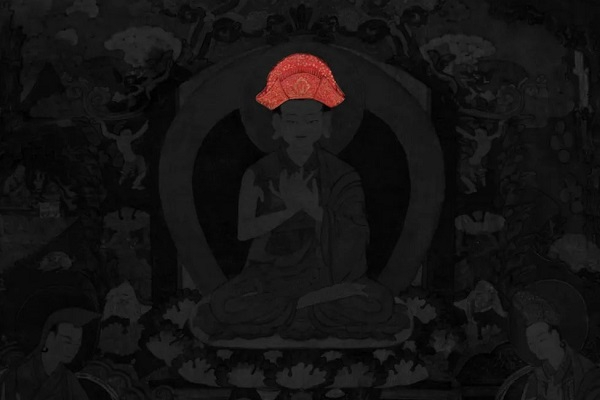
The fan-shaped hat is a unique hat shape in Tibetan areas. The hat is tall and wide, just like a fan. There are two pendants on both sides of the brim that hang down to the shoulders or lower. The inner and outer sides of the hat represent the Western Paradise, and the Crown tassel on the top represents the thousand Buddhas.
Fan-shaped hats are divided into two types: Drozma and Zolu. They look like cockscombs. The difference between the two is that Drozma 's crown tassel are close together, while Zolu's crown tassel are scattered. In the three major monasteries (Ganden Monastery, Drepung Monastery and Sera Monastery), general monks wear Zolu hat, while deacon monks wear Drozma hats. The monks practicing Tantric or holding academic degrees in Tashilhunpo Monastery wear Drozma hat, and all other monks wear Zolu hat. The tops of the Drozma worn by the monks of the Potala Palace and the Tashilhunpo Monastery were slightly bent, and the crown tassel was slightly scattered.
In the usual religious activities of the Kagyu sect, monks wear Drozma or Zolu hats. A hat shaped like a peacock spreading its tail must be worn during major ceremonies. The monks in different levels of other sects wear different hats too, which is the same as that in the three major temples.
Small Hat
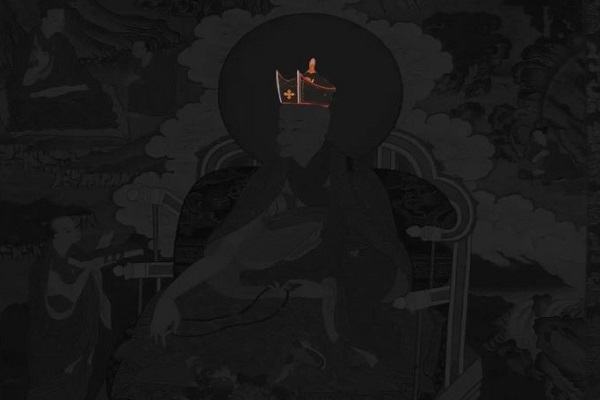
This type of hat is small in size, does not have decoration, and has no pendants on two sides. Small Hat is mainly the traditional hat of Kagyu. The most famous one is the hat that successive Karmapas (the head of the Karma Kagyu) wear.
It developed into two kinds starting from the fifth Karmapa (Deshin Shekpa, 1384–1415): One is a simple traditional hat, and the other is a black hat with ornate decoration.
The small-type hat is being worn by Masters of other sects too, but it is not as popular as in Karma Kagyu School.
Email response within 0.5~24 hours.




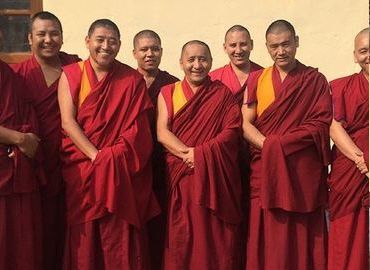
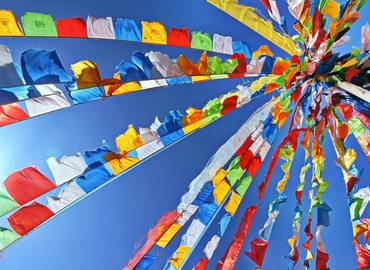

Typically Asked Questions from Our Clients
Asked by Dian***
Can you please tell me who in leadership of centuries ago may have worn a tall, red (cone-shaped) hat with red robes and highly revered, carried during procession?
Thankyou ( from Kentucky)
Dear Diane, There're too many revered leaders/masters wearing a tall, red hats with robes. Could you please describe more experience about him?